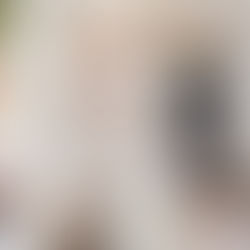Corneal Ulcers in Dogs & Cats

The cornea is the clear, shiny membrane which makes up the surface of the eyeball. It is much like a clear window. To understand a corneal ulcer, you must first understand how the cornea is constructed. The cornea is comprised of three layers. The most superficial layer is the epithelium. Actually, this layer is comprised of many, very thin layers of cells. Below the epithelium is the stroma, and the deepest layer is Descemet's membrane. Because all of these layers are clear, it is not possible to see them without special stains and a microscope.
An erosion through a few layers of the epithelium is called a corneal erosion or a corneal abrasion. A corneal ulcer is an erosion through the entire epithelium and into the stroma. If the erosion goes through the epithelium and stroma to the level of Descemet's membrane, a descemetocele exists. If Descemet's membrane ruptures, the liquid inside the eyeball leaks out and the eye collapses.
What causes corneal ulcers?
There are several causes for corneal ulcers in cats and dogs. The most common is trauma. An ulcer may result from blunt trauma, such as a pet rubbing its eye on a carpet, or due to a laceration, such as a scratch. The second most common cause is chemical burn of the cornea. This may happen when irritating shampoo or dip gets in the eye.
Less common causes of corneal ulcers include bacterial infections, viral infections, and other diseases. These may originate in the eye or develop secondary to disease elsewhere in the body.
What will my pet do if an ulcer is present?
A corneal ulcer is very painful. In response to pain, most pets rub the affected eye with a foot or on the carpet. To protect the eye, they keep the lids tightly closed. Occasionally, there will be a discharge that collects in the corner of the eye or runs down the face.
How is a corneal ulcer diagnosed?
Superficial corneal abrasions are usually not visible. They can be highlighted and seen with the use of fluorescein stain. A drop of this orange-colored stain is placed on the cornea. The dye will adhere to an area of ulceration and is easily visualized with a special black light called a Wood's light.
Can an ulcer be treated?
Yes. However, the form of treatment depends on whether there is a corneal abrasion, corneal ulcer, or descemetocele present.
Corneal abrasions generally heal within 3-5 days. Medication is used to prevent bacterial infections (antibiotic ophthalmic drops or ointment) and speed up the healing process.
If a corneal ulcer or descemetocele is present, measures must be taken to protect the eye and to promote healing. Since petts do not wear eye patches well, surgical techniques are often used to close the eyelids and cover the ulcer or descemetocele. These measures protect the eye for several days, then are reversed so the pet can use the eye again.
Ulcers that do not heal well often have a buildup of dead cells at the ulcer edge. These dead cells prevent normal cells from the corneal surface from sliding over the ulcer edge and filling in the defect. If this appears to be part of the healing problem, the dead cells are removed from the edges of the ulcer before the eyelids are surgically closed. In some cases, removing the dead cells may be all that is needed to start the healing process, so surgical closing of the eyelids may not be necessary.
How do I know when the treatment is completed?
The best way to tell that the cornea has healed is to repeat the fluorescein stain test. This should be done after approximately 5-7 days of treatment.
What does it mean if there are red streaks near the ulcer?
The normal cornea has no blood vessels going through it. However, when a corneal ulcer or descemetocele occurs, the body senses a need to increase its healing capabilities. New blood vessels are created by a process called neovascularization. The new vessels begin at the sclera (the white part of the eye) and course their way to the ulcer.
Neovascularization is a good response because it hastens healing. However, after the ulcer is healed, these vessels remain in the cornea. They are not painful, but they do obstruct vision. Therefore, it is desirable to remove them. This is done with steroid (cortisone) ophthalmic drops or ointment. Cortisone is used for a few days to several weeks, depending on how many vessels exist.
It is important that steroids not be used in the eye too soon because they will stop healing of a corneal ulcer and may worsen it. Therefore, the fluorescein dye test should be performed before beginning this type of medication. If steroids are used and pain occurs in the eye again, discontinue the steroids and have the eye rechecked.






















